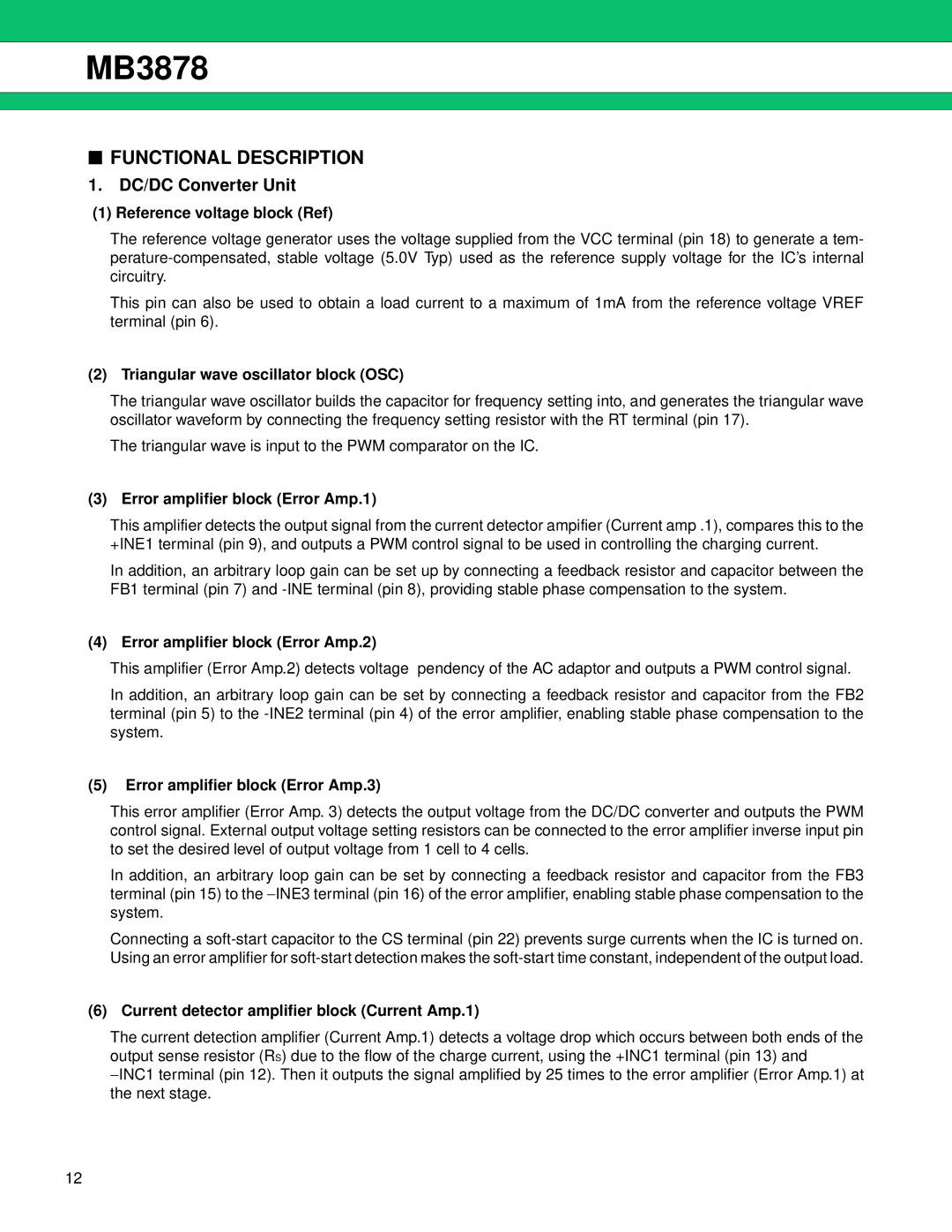
MB3878
■FUNCTIONAL DESCRIPTION
1.DC/DC Converter Unit
(1)Reference voltage block (Ref)
The reference voltage generator uses the voltage supplied from the VCC terminal (pin 18) to generate a tem-
This pin can also be used to obtain a load current to a maximum of 1mA from the reference voltage VREF terminal (pin 6).
(2) Triangular wave oscillator block (OSC)
The triangular wave oscillator builds the capacitor for frequency setting into, and generates the triangular wave oscillator waveform by connecting the frequency setting resistor with the RT terminal (pin 17).
The triangular wave is input to the PWM comparator on the IC.
(3) Error amplifier block (Error Amp.1)
This amplifier detects the output signal from the current detector ampifier (Current amp .1), compares this to the +INE1 terminal (pin 9), and outputs a PWM control signal to be used in controlling the charging current.
In addition, an arbitrary loop gain can be set up by connecting a feedback resistor and capacitor between the FB1 terminal (pin 7) and
(4) Error amplifier block (Error Amp.2)
This amplifier (Error Amp.2) detects voltage pendency of the AC adaptor and outputs a PWM control signal.
In addition, an arbitrary loop gain can be set by connecting a feedback resistor and capacitor from the FB2 terminal (pin 5) to the
(5)Error amplifier block (Error Amp.3)
This error amplifier (Error Amp. 3) detects the output voltage from the DC/DC converter and outputs the PWM control signal. External output voltage setting resistors can be connected to the error amplifier inverse input pin to set the desired level of output voltage from 1 cell to 4 cells.
In addition, an arbitrary loop gain can be set by connecting a feedback resistor and capacitor from the FB3 terminal (pin 15) to the −INE3 terminal (pin 16) of the error amplifier, enabling stable phase compensation to the system.
Connecting a
(6) Current detector amplifier block (Current Amp.1)
The current detection amplifier (Current Amp.1) detects a voltage drop which occurs between both ends of the output sense resistor (RS) due to the flow of the charge current, using the +INC1 terminal (pin 13) and −INC1 terminal (pin 12). Then it outputs the signal amplified by 25 times to the error amplifier (Error Amp.1) at the next stage.
12
